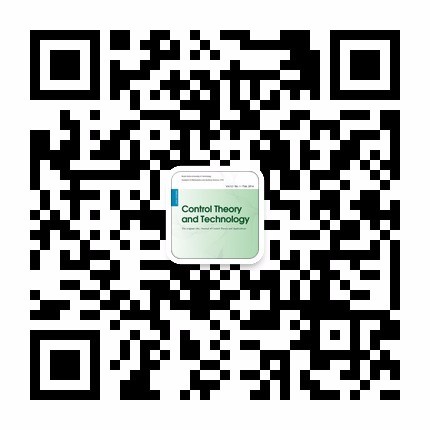| This Paper:Browse 536 Download 0 |

码上扫一扫! |
| Maximum correntropy-based pseudolinear Kalman filter for passive bearings-only target tracking |
| AsfiaUrooj1,RahulRadhakrishnan2 |
|
|
| (1 Department of Electrical Engineering, SVNIT, Surat, Gujarat 395007, India;2 Department of Electrical Engineering, NIT Calicut, Kozhikode, Kerala 673601, India) |
|
| 摘要: |
| This paper proposes a new approach for solving the bearings-only target tracking (BoT) problem by introducing a maximum
correntropy criterion to the pseudolinear Kalman filter (PLKF). PLKF has been a popular choice for solving BoT problems
owing to the reduced computational complexity. However, the coupling between the measurement vector and pseudolinear
noise causes bias in PLKF. To address this issue, a bias-compensated PLKF (BC-PLKF) under the assumption of Gaussian
noisewas formulated. However, this assumptionmay not be valid in most practical cases. Therefore, a bias-compensated PLKF
with maximum correntropy criterion is introduced, resulting in two new filters: maximum correntropy pseudolinear Kalman
filter (MC-PLKF) and maximum correntropy bias-compensated pseudolinear Kalman filter (MC-BC-PLKF). To demonstrate
the performance of the proposed estimators, a comparative analysis assuming large outliers in the process and measurement
model of 2D BoT is conducted. These large outliers are modeled as non-Gaussian noises with diverse noise distributions that
combine Gaussian and Laplacian noises. The simulation results are validated using root mean square error (RMSE), average
RMSE (ARMSE), percentage of track loss and bias norm. Compared to PLKF and BC-PLKF, all the proposed maximum
correntropy-based filters (MC-PLKF and MC-BC-PLKF) performed with superior estimation accuracy. |
| 关键词: Bearings-only target tracking · Pseudolinear Kalman filter · Maximum correntropy criterion · Non-Gaussian noise |
| DOI:https://doi.org/10.1007/s11768-024-00212-y |
|
| 基金项目:This work was supported by the Core Research Grant, CRG/2022/001997, Science and Engineering Research Board, Government of India. |
|
| Maximum correntropy-based pseudolinear Kalman filter for passive bearings-only target tracking |
| Asfia Urooj1,Rahul Radhakrishnan2 |
| (1 Department of Electrical Engineering, SVNIT, Surat, Gujarat 395007, India;2 Department of Electrical Engineering, NIT Calicut, Kozhikode, Kerala 673601, India) |
| Abstract: |
| This paper proposes a new approach for solving the bearings-only target tracking (BoT) problem by introducing a maximum
correntropy criterion to the pseudolinear Kalman filter (PLKF). PLKF has been a popular choice for solving BoT problems
owing to the reduced computational complexity. However, the coupling between the measurement vector and pseudolinear
noise causes bias in PLKF. To address this issue, a bias-compensated PLKF (BC-PLKF) under the assumption of Gaussian
noisewas formulated. However, this assumptionmay not be valid in most practical cases. Therefore, a bias-compensated PLKF
with maximum correntropy criterion is introduced, resulting in two new filters: maximum correntropy pseudolinear Kalman
filter (MC-PLKF) and maximum correntropy bias-compensated pseudolinear Kalman filter (MC-BC-PLKF). To demonstrate
the performance of the proposed estimators, a comparative analysis assuming large outliers in the process and measurement
model of 2D BoT is conducted. These large outliers are modeled as non-Gaussian noises with diverse noise distributions that
combine Gaussian and Laplacian noises. The simulation results are validated using root mean square error (RMSE), average
RMSE (ARMSE), percentage of track loss and bias norm. Compared to PLKF and BC-PLKF, all the proposed maximum
correntropy-based filters (MC-PLKF and MC-BC-PLKF) performed with superior estimation accuracy. |
| Key words: Bearings-only target tracking · Pseudolinear Kalman filter · Maximum correntropy criterion · Non-Gaussian noise |

